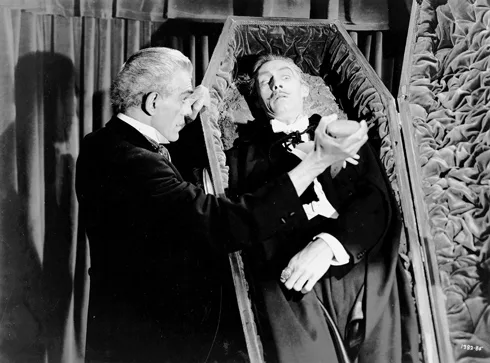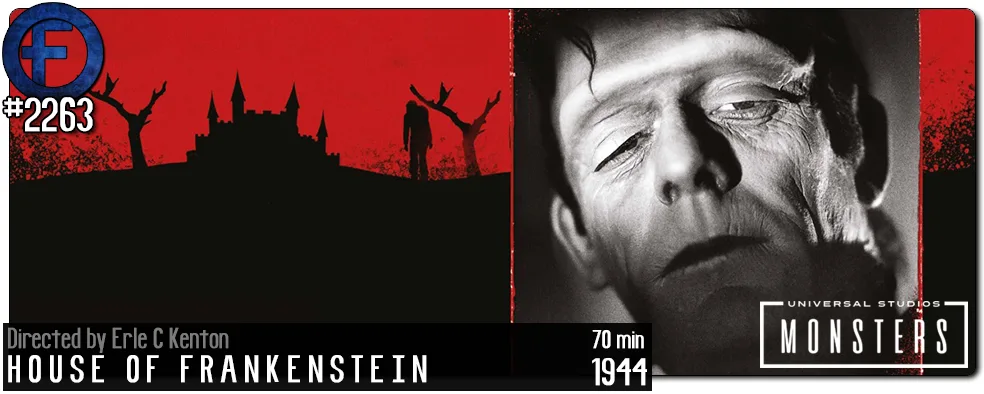Movie Review – House of Frankenstein
Principal Cast : Boris Karloff, Lon Chaney Jr, John Carradine, J Carrol Naish, Glenn Strange, Anne Gwynne, Peter Coe, Lionel Atwell, George Zucco, Elena Verdugo, Sig Ruman, William Edmunds, Charles F Miller, Julius Tannen, Phillip Van Zandt, Hans Herbert, Dick Dickinson, George Lynn, Michael Mark.
Synopsis: A deranged scientist escapes from prison and recruits Dracula, Frankenstein’s monster and the Wolf Man to get revenge on his behalf.
********
I’ve gotta be honest: it’s incredibly weird to see Boris Karloff in a Frankenstein film in which he doesn’t play the ubiquitous monster. No, here Karloff dominates the film as the dastardly Dr Gustav Niemann, taking over the late Dr Frankenstein’s research on cadavers and who eventually resuscitates a slumbering Monster from a cavern, while threaded into the film’s piecemeal narrative is a fancy-pants Dracula and an angry Lon Chaney as the Wolf Man, as an Avengers-type confabulation of the studio’s then hugely popular monster stars. Unfortunately, despite relatively competent direction from B-movie stalwart Erle C Kenton (Island Of Lost Souls), House of Frankenstein feels more like a wartime dugout than an actual building; the foundation story is bastardised pulp trash, the writing laughable, and the overall plot pretty generic – and there’s no legitimate creepy moments anywhere to be found – so the effect of the film is a handsomely produced, beautifully photographed waste of time.
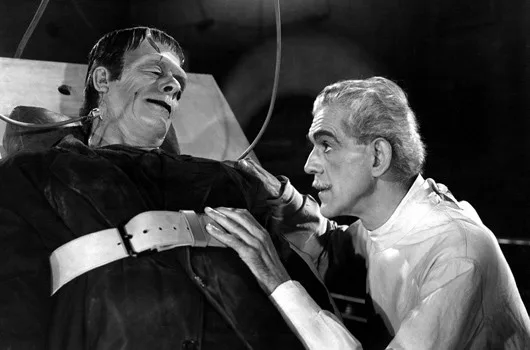
So you’re Universal Studios, you have a burgeoning horror franchise involving some of literary fiction’s greatest creations and a solid, dependably profitable run of feature films involving each of these characters in various solo films and sequels. Occasionally you’ve had the likes of Bela Lgosi and Lon Chaney Jr co-starring in an on-screen team-up for the ages, pitting the Wolf Man and Frankenstein’s Monster (in Frankenstein Meets the Wolf Man, released in 1943) together to salivating young willing audiences in a then-nascent Hollywood machine looking for profit as cheaply as possible. Realising the marketing and box-office potential of putting more of your famous, iconic monsters together in the same film, Universal, through director Erle Kenton, threw Dracula, the Wolf Man, and Frankenstein’s monster together in House of Frankenstein, a cobbled-together mishmash of set pieces and segues that occasionally works, but more often feel like a poorly handled jumble of ideas despite competent direction on-set. It’s also one of those jarring things seeing an actor so linked to one or two monsters playing a completely different character while one of his on-screen characters is played by somebody else – Glenn Strange debuts as the Monster, replacing Boris Karloff who essayed the part in James Whale’s original film, while perennial screen icon Lon Chaney returns as the Wolf Man, and John Carradine seems to be having a great time as a reanimated Dracula; this triple-punch isn’t as effective as you’d expect, with neither the monsters being particularly effective this time around, nor the storyline accommodating any kind of interesting development.
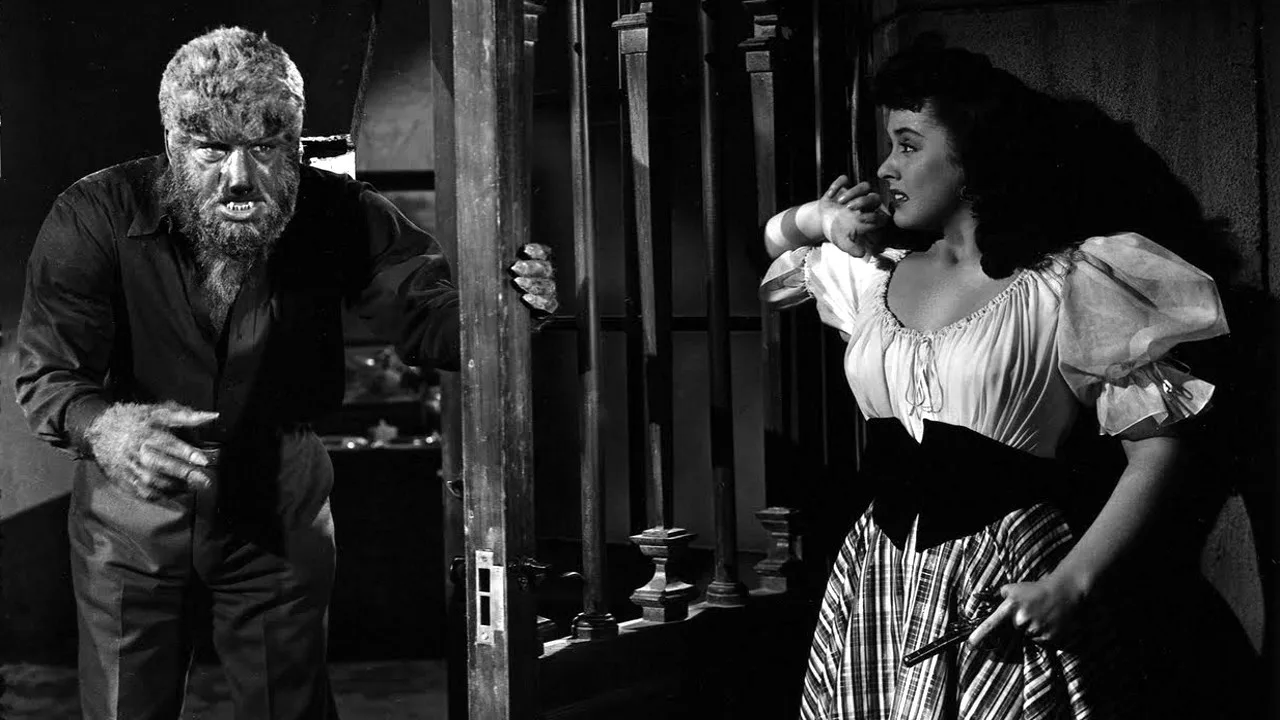
House of Frankenstein might not be the creepiest film ever made but it does contain some pretty decent production values, and a couple of memorable visual effects achieved by a variety of methods. One, in which Karloff’s insidious Dr Neimann removes a stake from the skeleton of Dracula in order to revive the vampire and seek revenge, has a transition sequence from skeleton to Carradine’s reinvigorated body, with an interstitial veins-and-arteries moment of translucence that was actually really cool; I can only imagine how audiences in the 1940’s were blown away by it. The production value of the film is generally pretty high – the highest budget for a Frankenstein film to that point as well – and the technicality of the camerawork, set design and editing is all from the top shelf. Admittedly the production filmed on redressed existing film sets, which most likely kept costs down and allowed more attention to be turned to the characters, with Kenton’s crisp photography maximising the effect – or lack thereof – of his monsters taking pride of place. Karloff towers over the film’s tableau with his formidable screen presence, while J Carrol Naish, as Neimann’s put-upon hunchback assistant, is mournful and tragic by every extent; my wife commented that he should have been called Igor but I’m guessing the filmmakers had to avoid that cliche for some reason. In any case, the costuming, set design, lighting and camerawork remain the film’s strongest elements, despite a plot lacking nuance or freshness or a cast given much to do other than often mug to and for the camera.
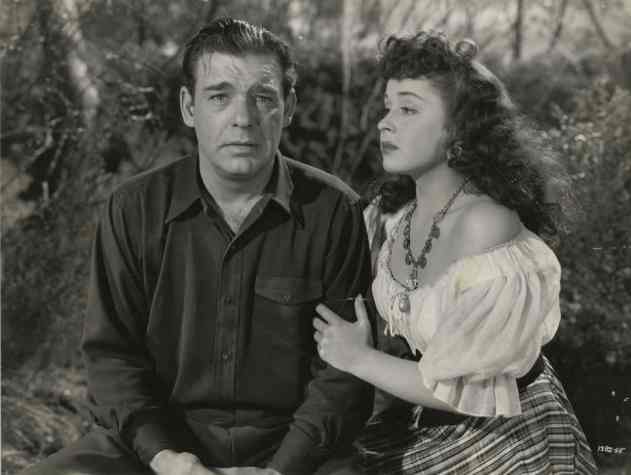
House of Frankenstein is a cinematic curio in that it aspires to be a similarly tragic opus to the original Frankenstein, but lacks the compelling characters in order to do so, and mimicks too closely Mary Shelley’s themes and plot points to stand as its own thing. There’s some value to be found here, particularly in Karloff and Chaney’s performances, some of the respectable VFX and cinematograpy, but a segmented plot and overall indifference to the audience’s value of the iconic monsters involved leaves the film floundering as an also-ran, something I felt was only aided by a conspicuously brief running time. For fans only, really.
